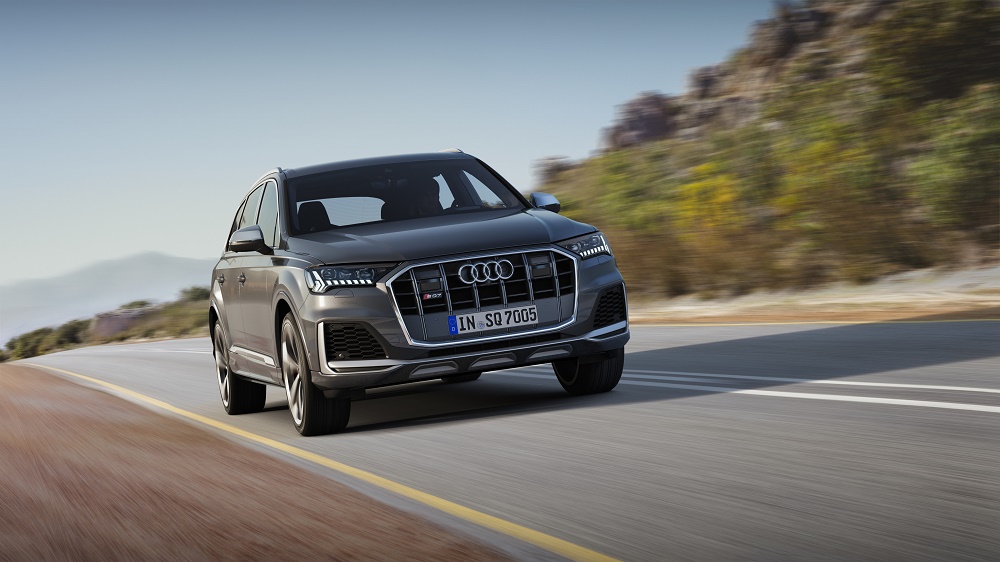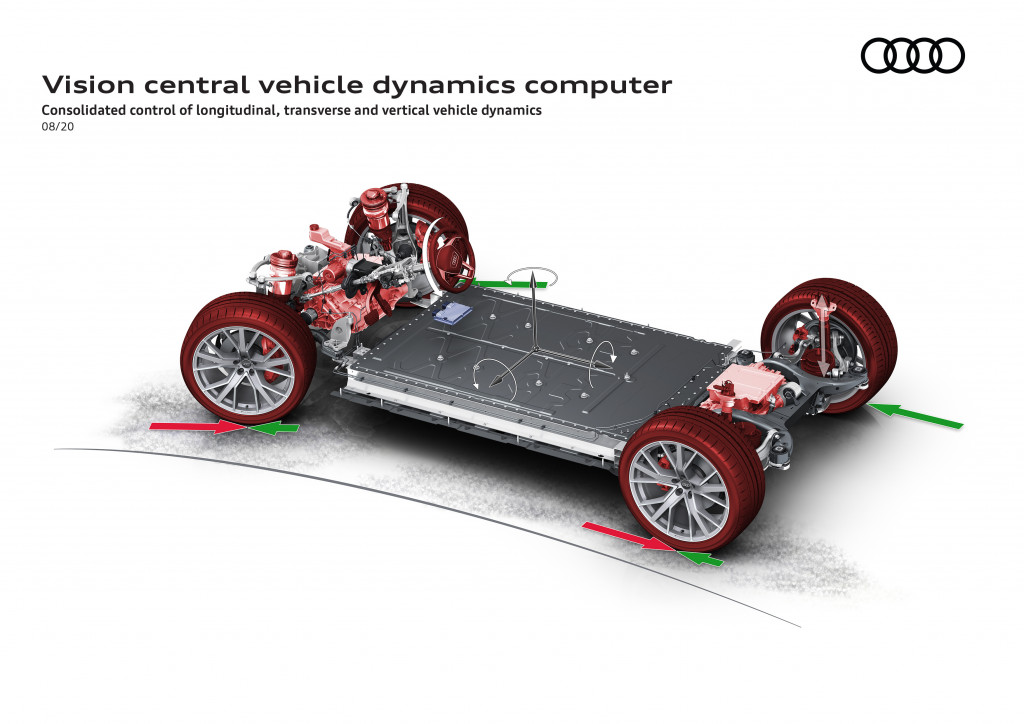On the way to harnessing all the advantages of a cloud-connected future, including V2X (vehicle-to-everything) communication and other technologies relating to autonomous driving, Audi is preparing to truly link the engine bay to all the rest of the components that govern how a vehicle rides, steers, stops, and reacts.
Audi is taking the logical next step with a system that it already pioneered. In the 2017 Q7, the automaker introduced its Electronic Chassis Platform (ECP), which smartly interlinks the various chassis-control technologies in the SUV, like the adaptive air suspension and all-wheel-steering system—and in the high-performance SQ7 version (and the SQ8), the electronic roll stabilization.

2020 Audi SQ7
Another more recent example is Audi’s 48-volt predictive active suspension system in the A8 sedan, which can help counter body motions and uneven loading or proactively, ahead of an anticipated side collision, lift the vehicle’s impact side more than three inches.
As we’ve observed in these vehicles, the system helps them feel more precise, and even smaller in some instances, thanks to the tighter coordination of these systems.
Up until now the ECP has interfaced and integrated systems that control lateral and horizontal dynamics. But with the next generation of vehicles it will soon be adding powertrain control and longitudinal dynamics to the mix—a mix that’s mastered by a single centralized unit.

Audi central vehicle dynamics computer - presented August 2020
This next-generation ECP takes what is described as a holistic approach and adds a new dimension in chassis controls.
Audi says that the central computer will have about ten times the power of the current (already very advanced) processor, and it has the potential to simultaneously actuate up to 90 components—versus no more than 24 today.
With respect to safety, each of the independent systems maintains its own check-and-balance system via independent thresholds. Additionally, separate processing units monitor the signals coming from the central computer’s algorithms.

Audi central vehicle dynamics computer - presented August 2020
The system would include controls for the dampers, air suspension, brake control, power electronics, steering, suspension, and many more items, all integrated so that latency is vastly reduced. The differences from an event to a coordinated response from subsystems is response is now in the microseconds rather than milliseconds.
“The potential is that you get a little extra out of every system… more sportiness, more efficiency, and more comfort,” explained Klaus Diepold, who is responsible for chassis-development network architecture.
Audi says that the same central computer could be used for front- or all-wheel drive vehicles and across vehicle types—including electric vehicles like the E-Tron, hybrids, and others with internal combustion engines.

Audi central vehicle dynamics computer - presented August 2020
Looking a few more years ahead, such a comprehensive system makes it easier to connect vehicles to the cloud. Instead of having separate vehicle systems responding in series to an event—like the need for a quick steering maneuver for a tight curve in the road—the inputs would be processed concurrently away by the central dynamics computer and applied to the relevant systems.
Will your next Audi have that better command of physics built in? Cost aside, Audi sees the biggest benefits from applying it in vehicles with a higher mass and higher center of gravity—so expect it soon in high-end and future electric products and continuing into other vehicles as they’re redesigned.
